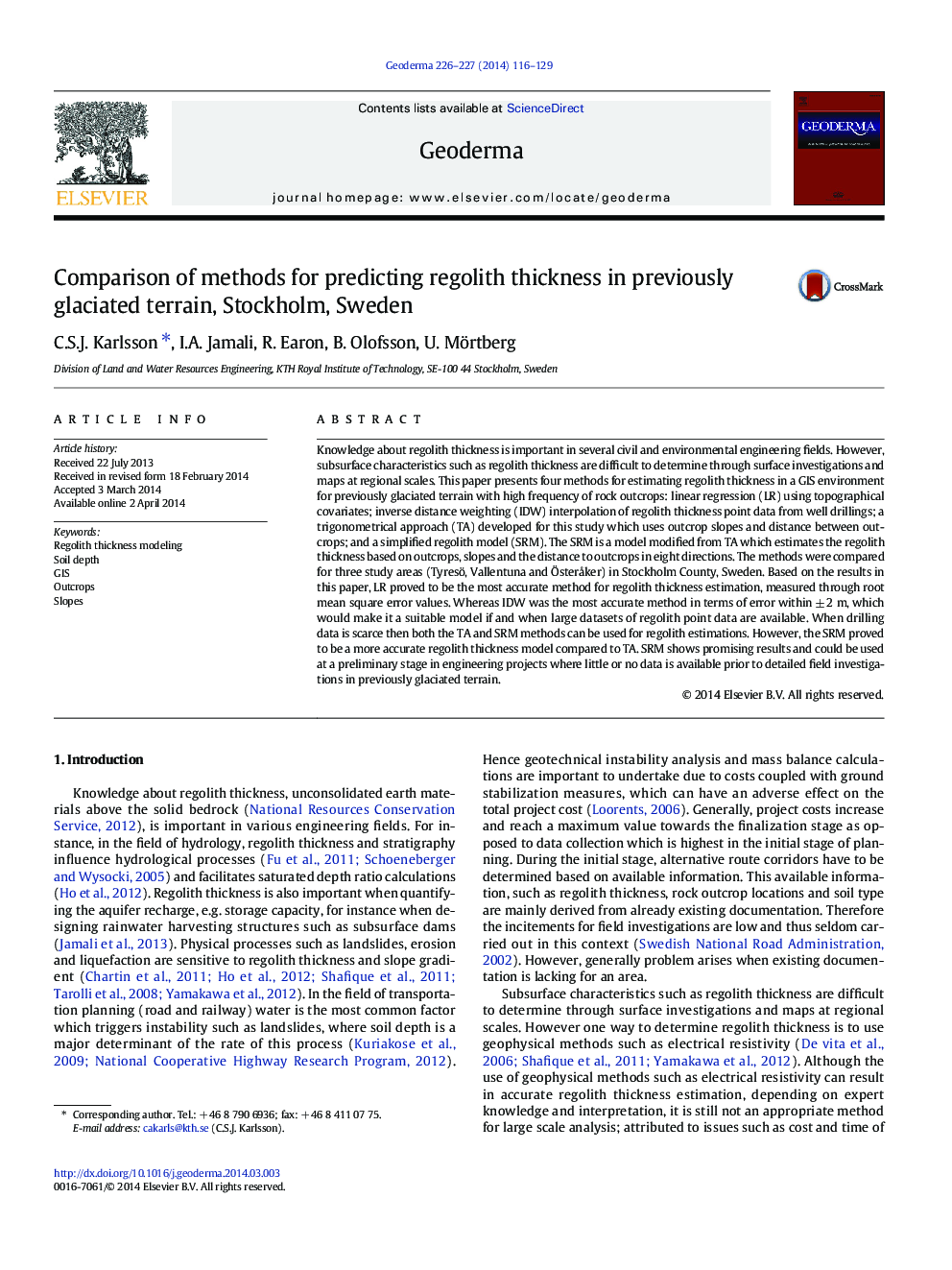| کد مقاله | کد نشریه | سال انتشار | مقاله انگلیسی | نسخه تمام متن |
|---|---|---|---|---|
| 6408852 | 1629472 | 2014 | 14 صفحه PDF | دانلود رایگان |
- Comparing four methods for estimating regolith thickness, i.e. LR, IDW, TA, and SRM.
- SRM estimates regolith thickness based on outcrops, slopes and distance.
- Data driven LR was the most accurate method for regolith thickness estimation.
- TA was not able to take local slope conditions into consideration.
- SRM is a better model when drilling data is not available.
Knowledge about regolith thickness is important in several civil and environmental engineering fields. However, subsurface characteristics such as regolith thickness are difficult to determine through surface investigations and maps at regional scales. This paper presents four methods for estimating regolith thickness in a GIS environment for previously glaciated terrain with high frequency of rock outcrops: linear regression (LR) using topographical covariates; inverse distance weighting (IDW) interpolation of regolith thickness point data from well drillings; a trigonometrical approach (TA) developed for this study which uses outcrop slopes and distance between outcrops; and a simplified regolith model (SRM). The SRM is a model modified from TA which estimates the regolith thickness based on outcrops, slopes and the distance to outcrops in eight directions. The methods were compared for three study areas (Tyresö, Vallentuna and ÃsterÃ¥ker) in Stockholm County, Sweden. Based on the results in this paper, LR proved to be the most accurate method for regolith thickness estimation, measured through root mean square error values. Whereas IDW was the most accurate method in terms of error within ± 2 m, which would make it a suitable model if and when large datasets of regolith point data are available. When drilling data is scarce then both the TA and SRM methods can be used for regolith estimations. However, the SRM proved to be a more accurate regolith thickness model compared to TA. SRM shows promising results and could be used at a preliminary stage in engineering projects where little or no data is available prior to detailed field investigations in previously glaciated terrain.
Journal: Geoderma - Volumes 226â227, August 2014, Pages 116-129
